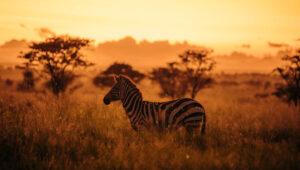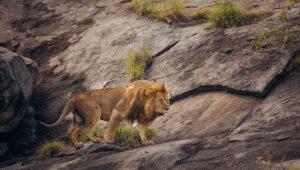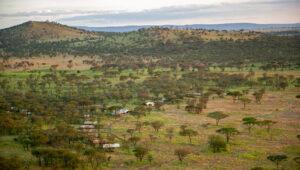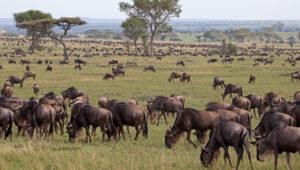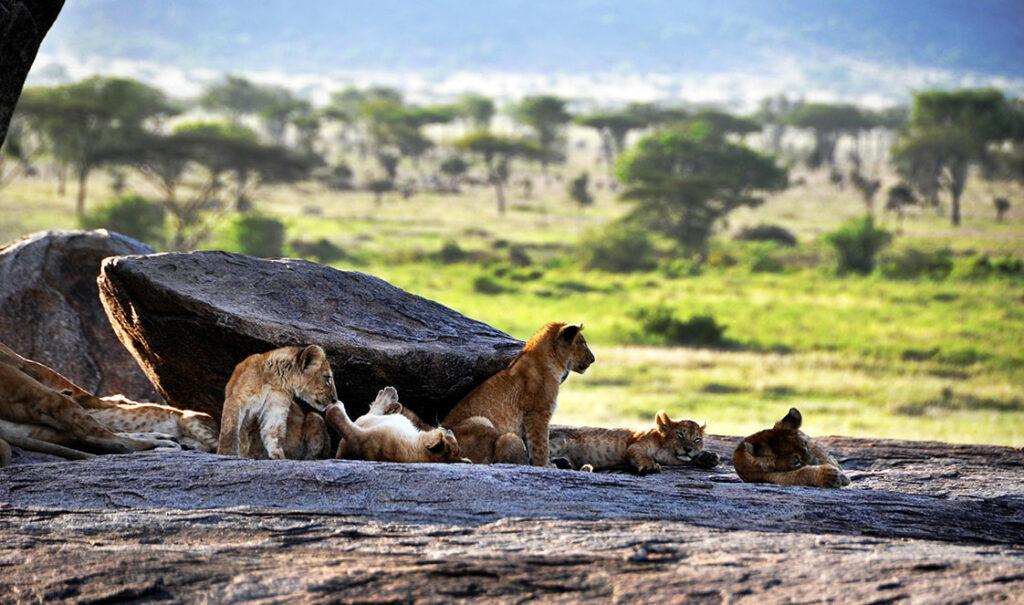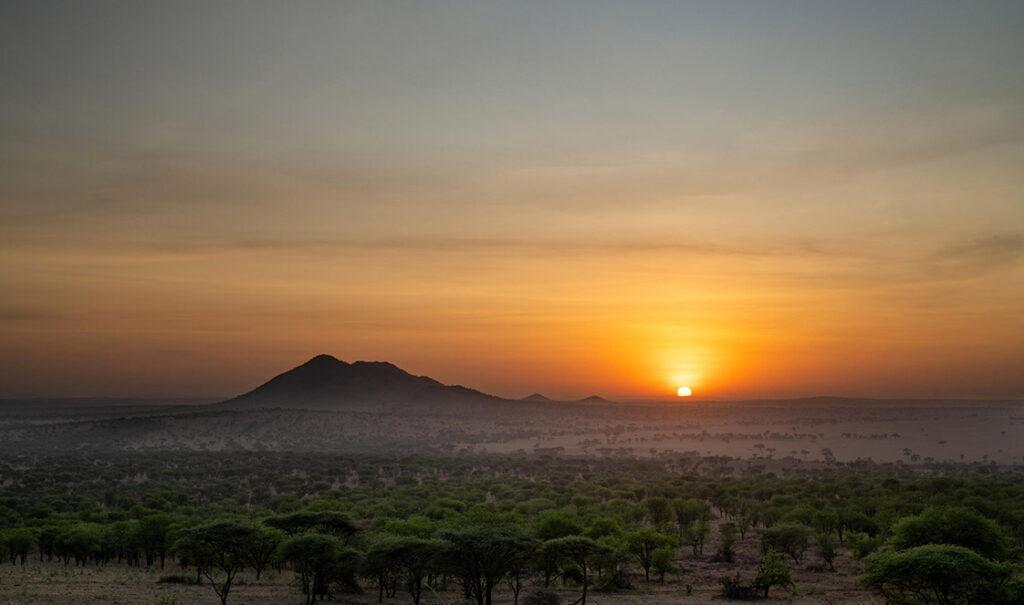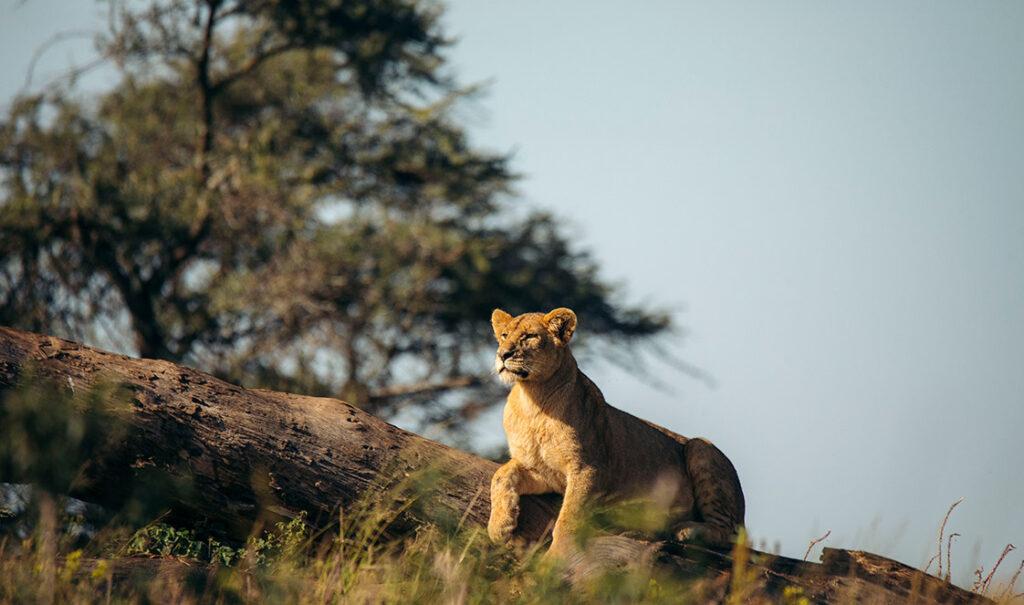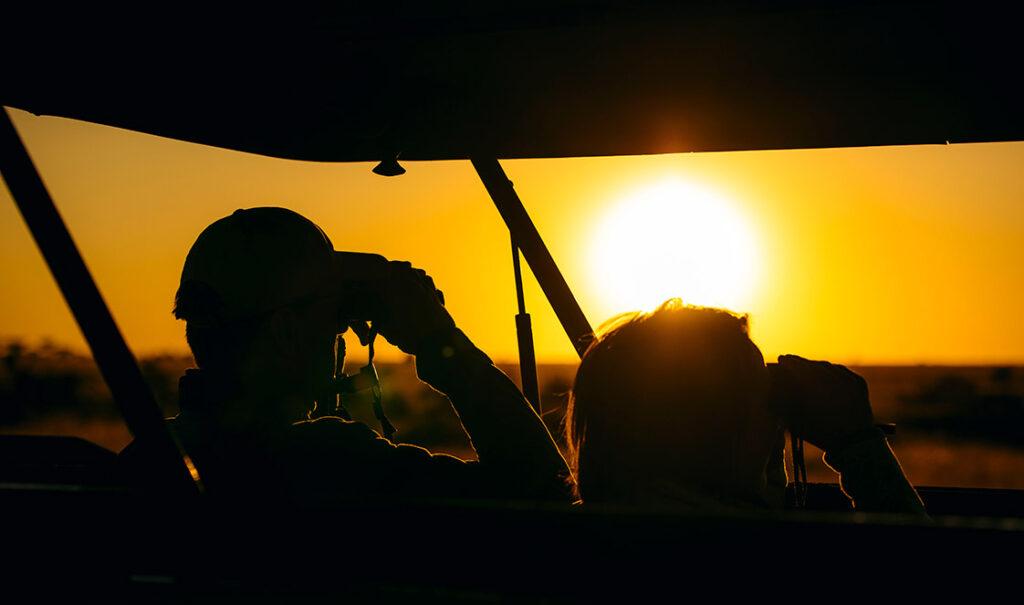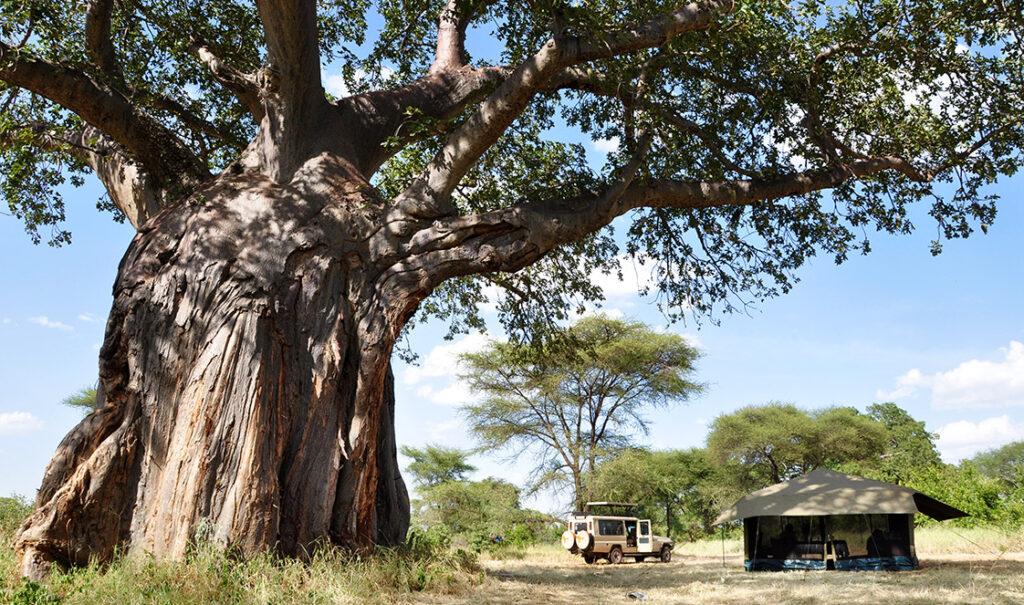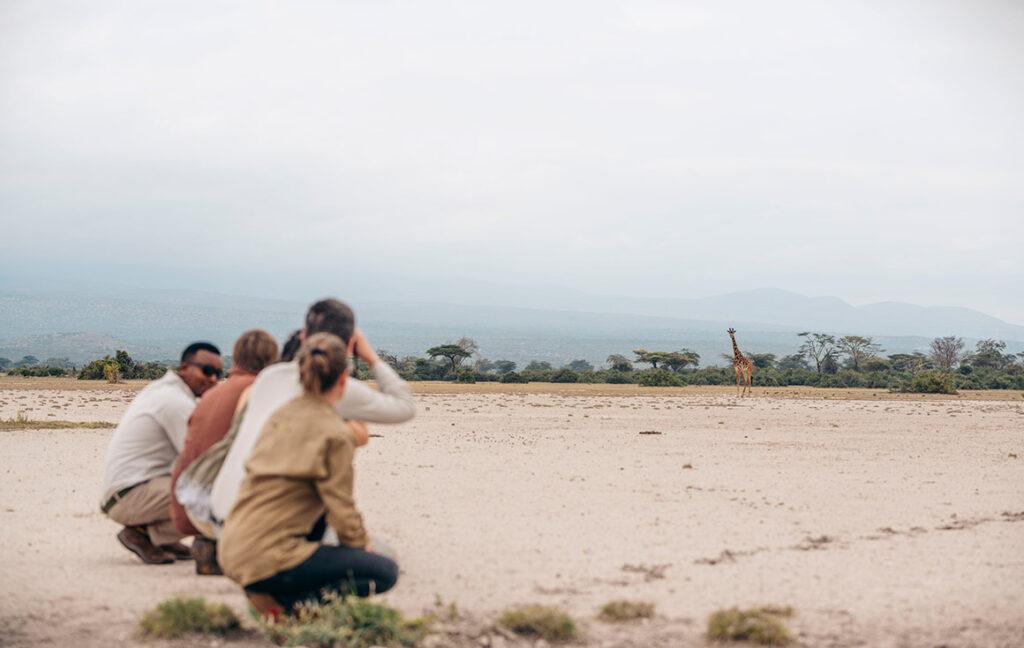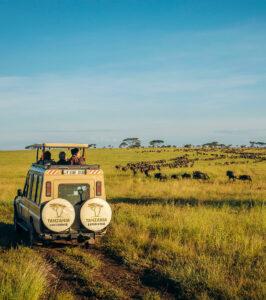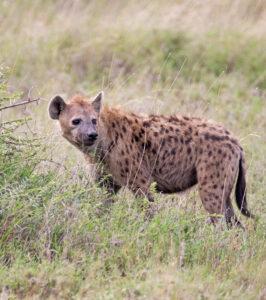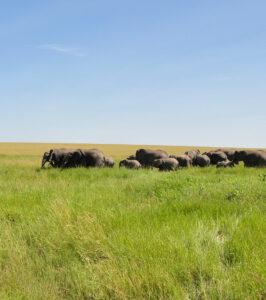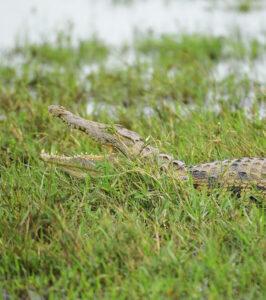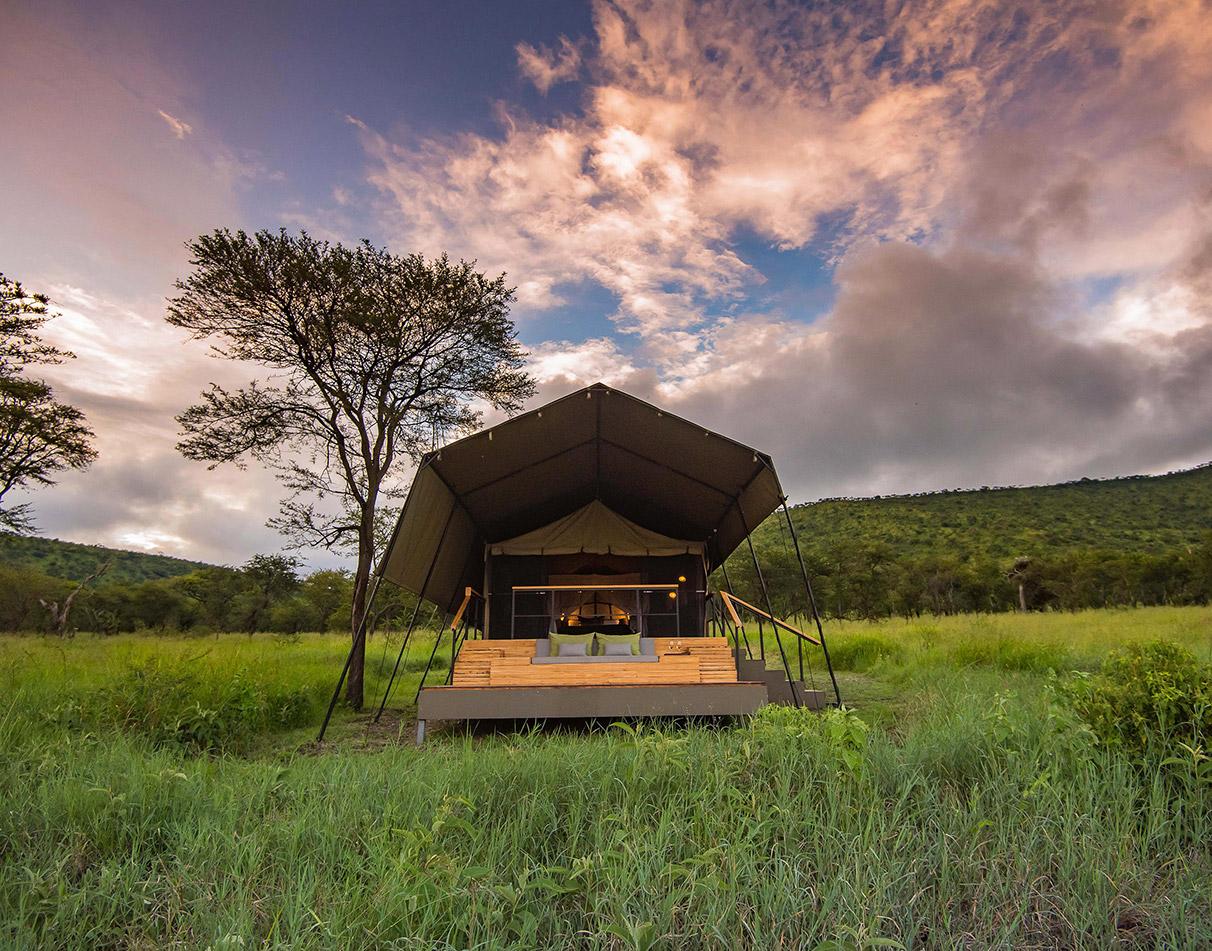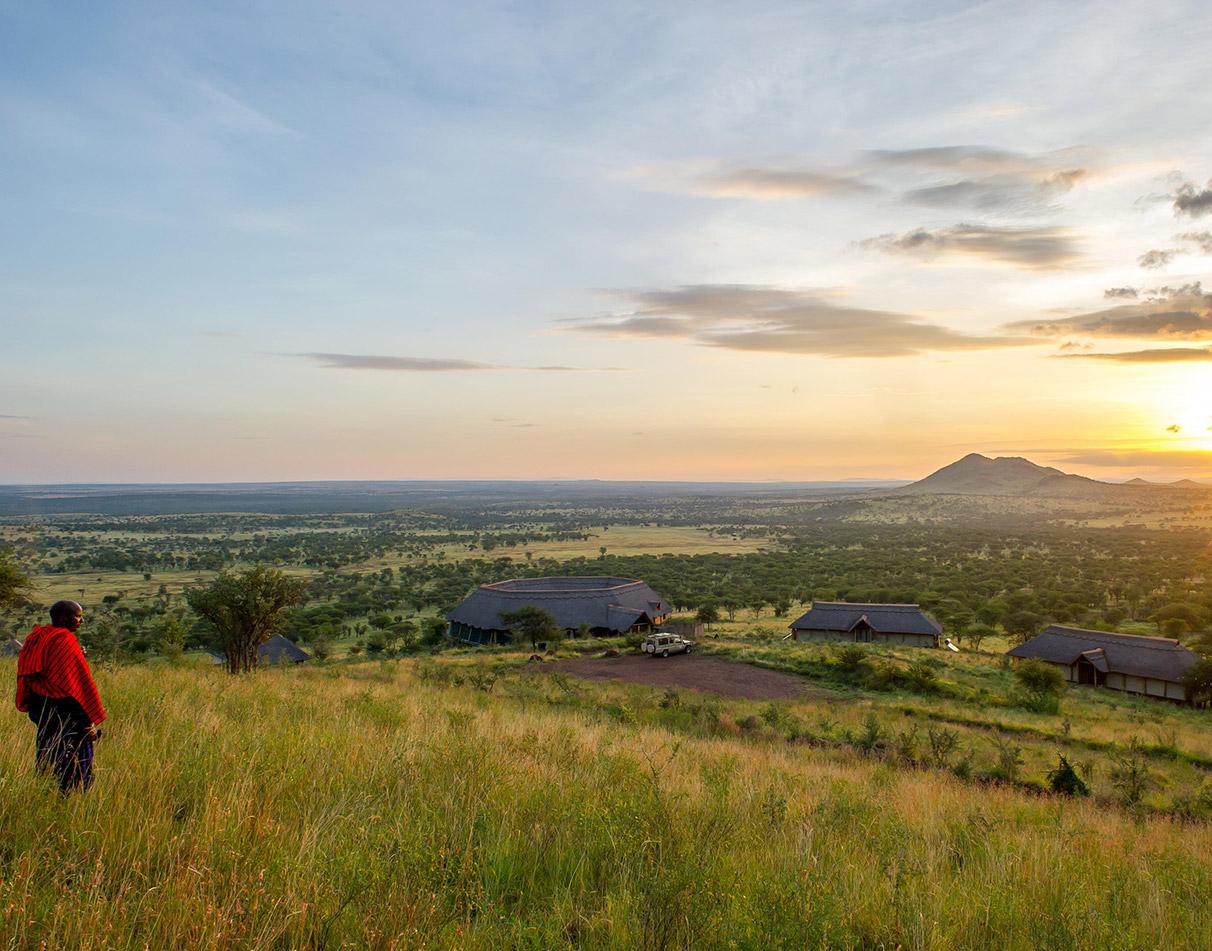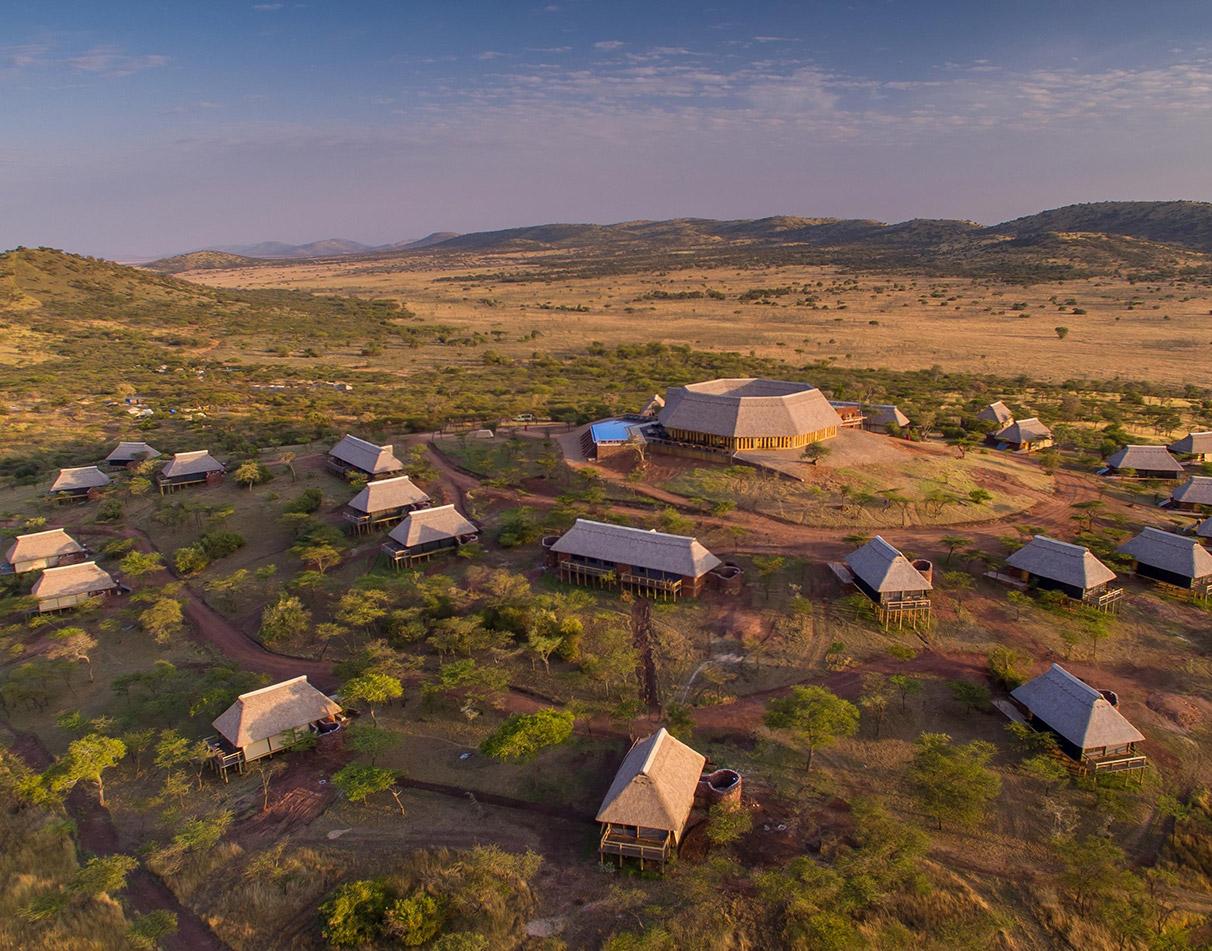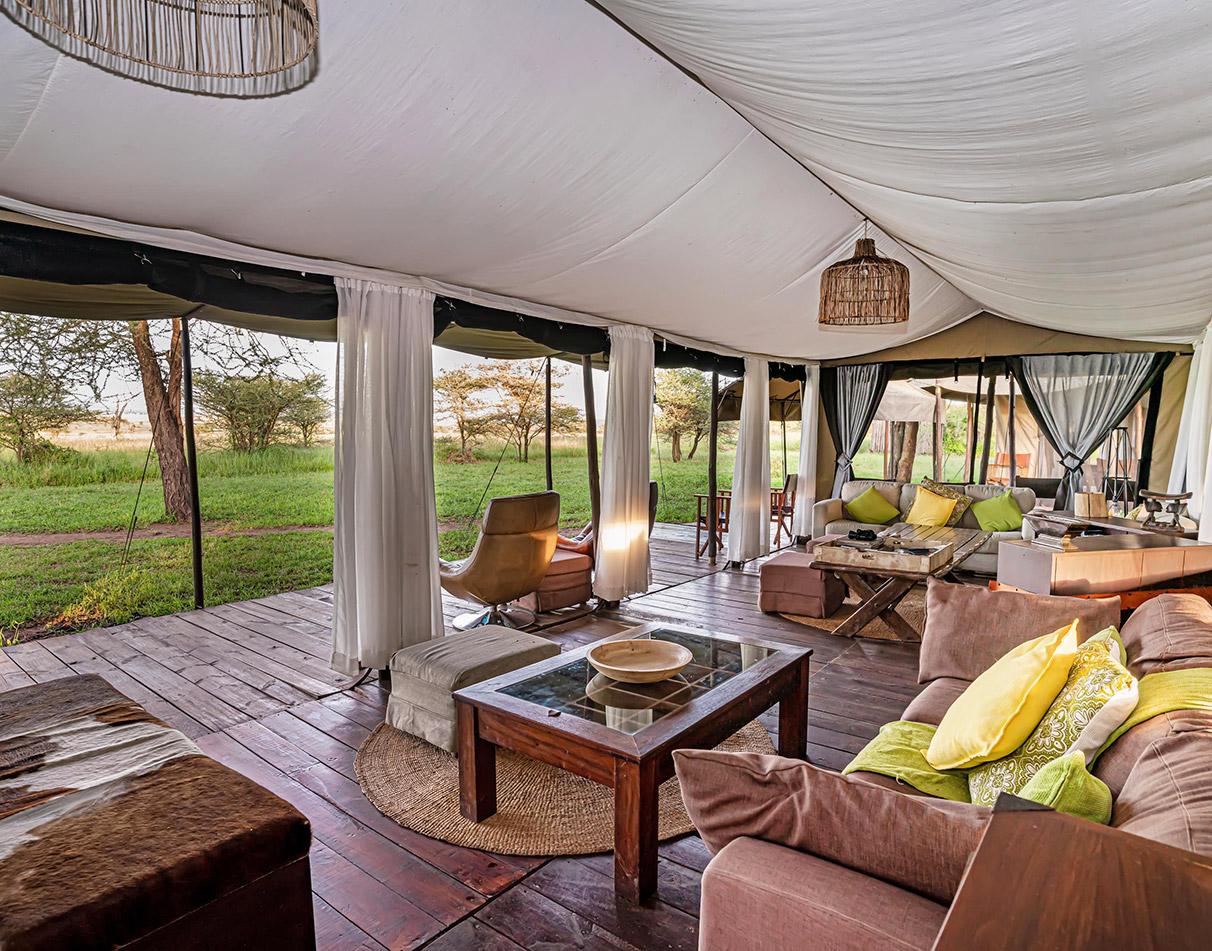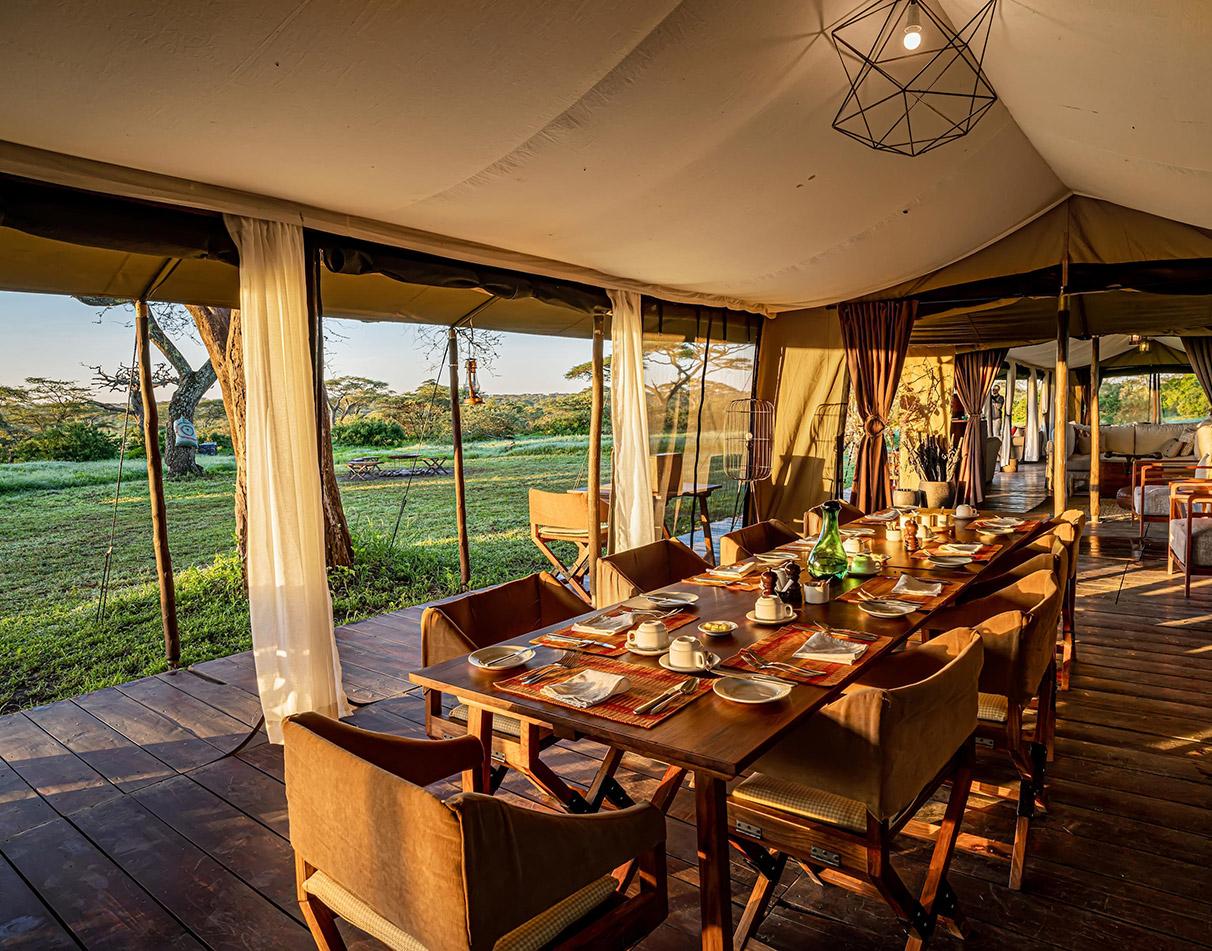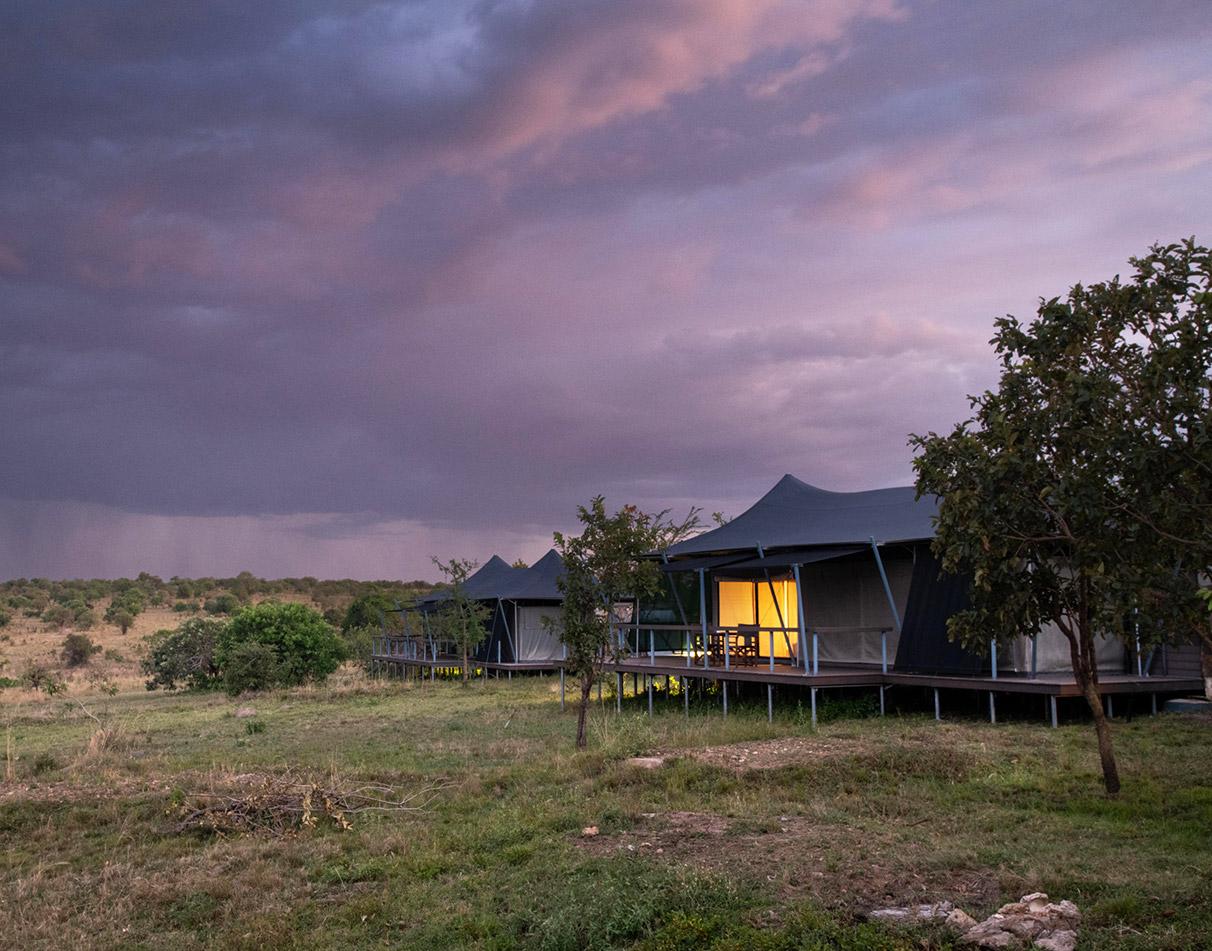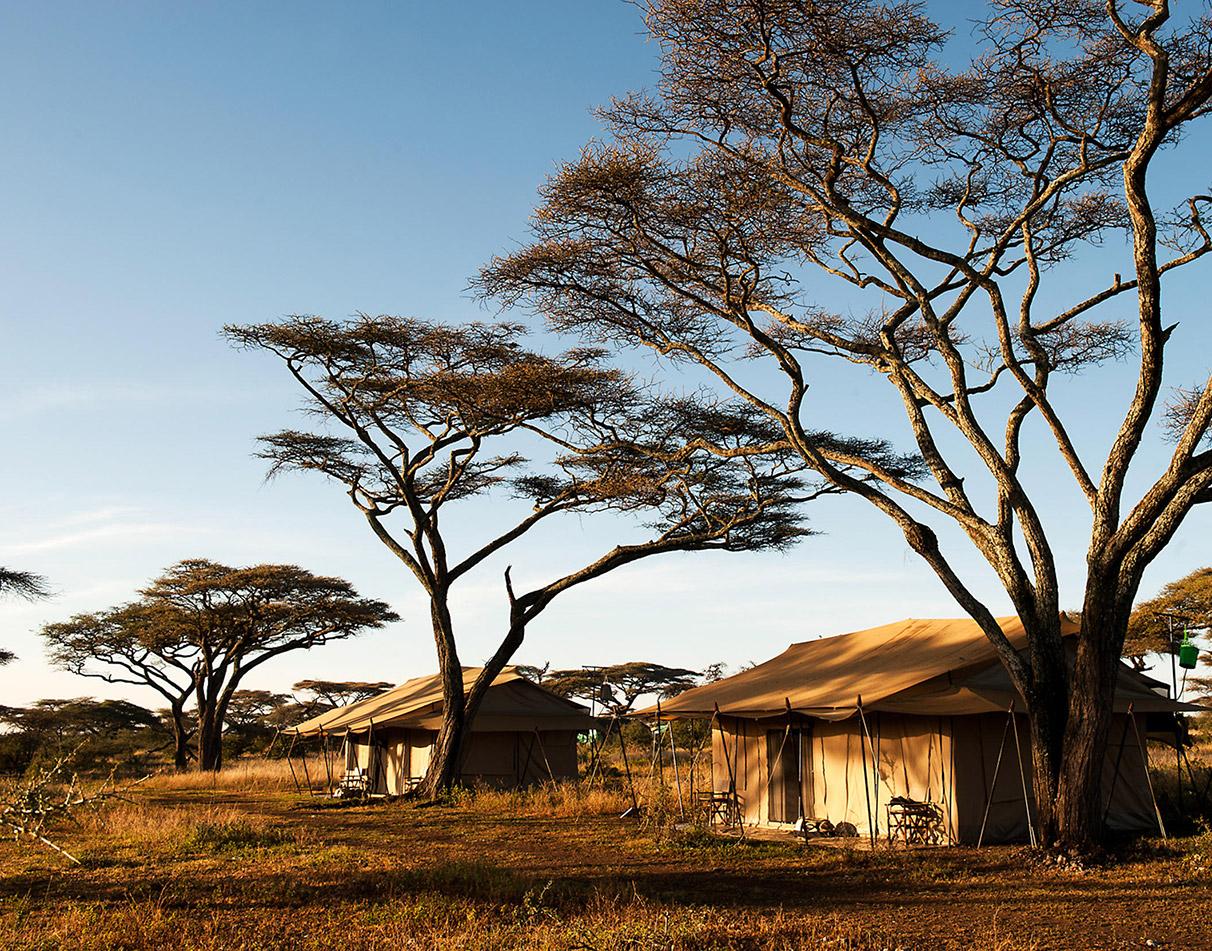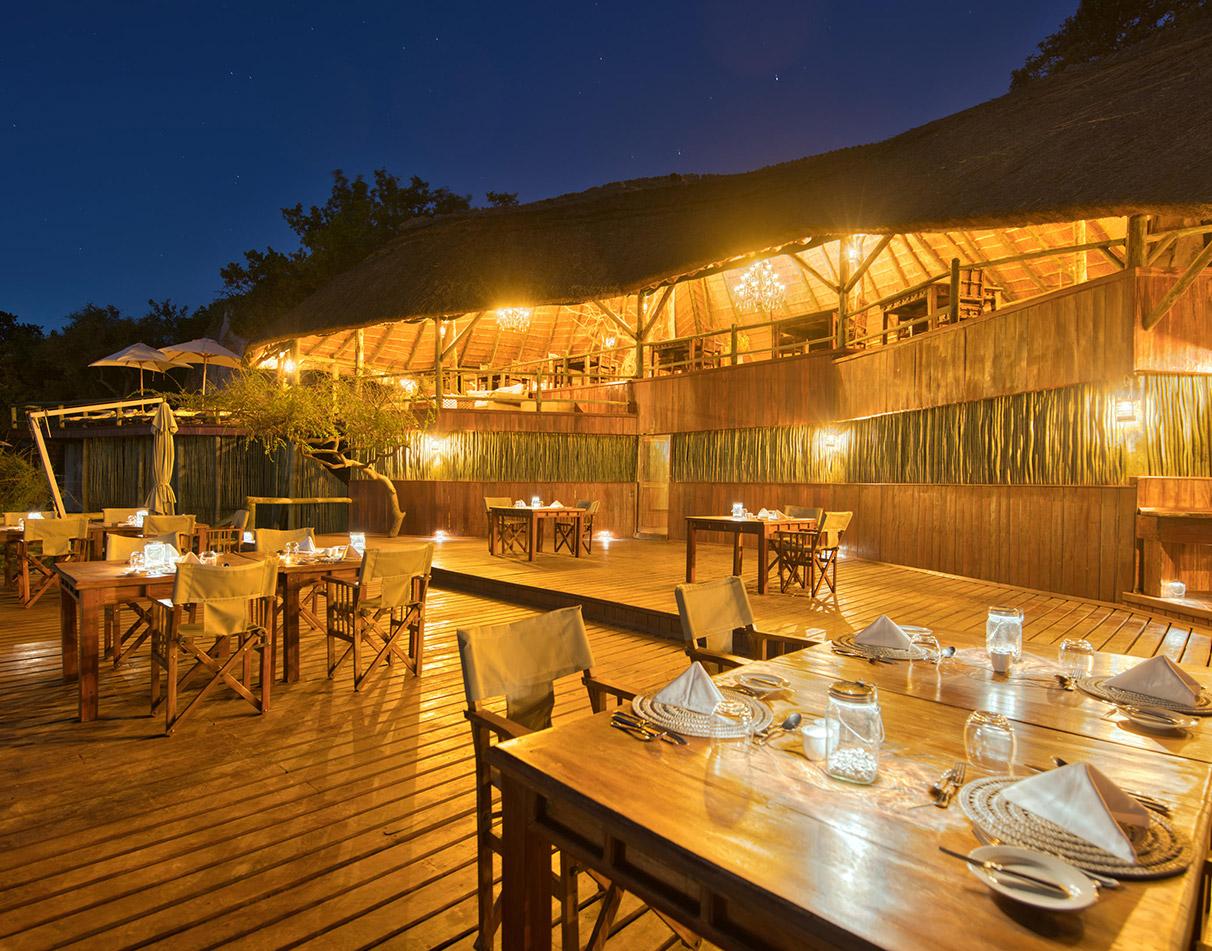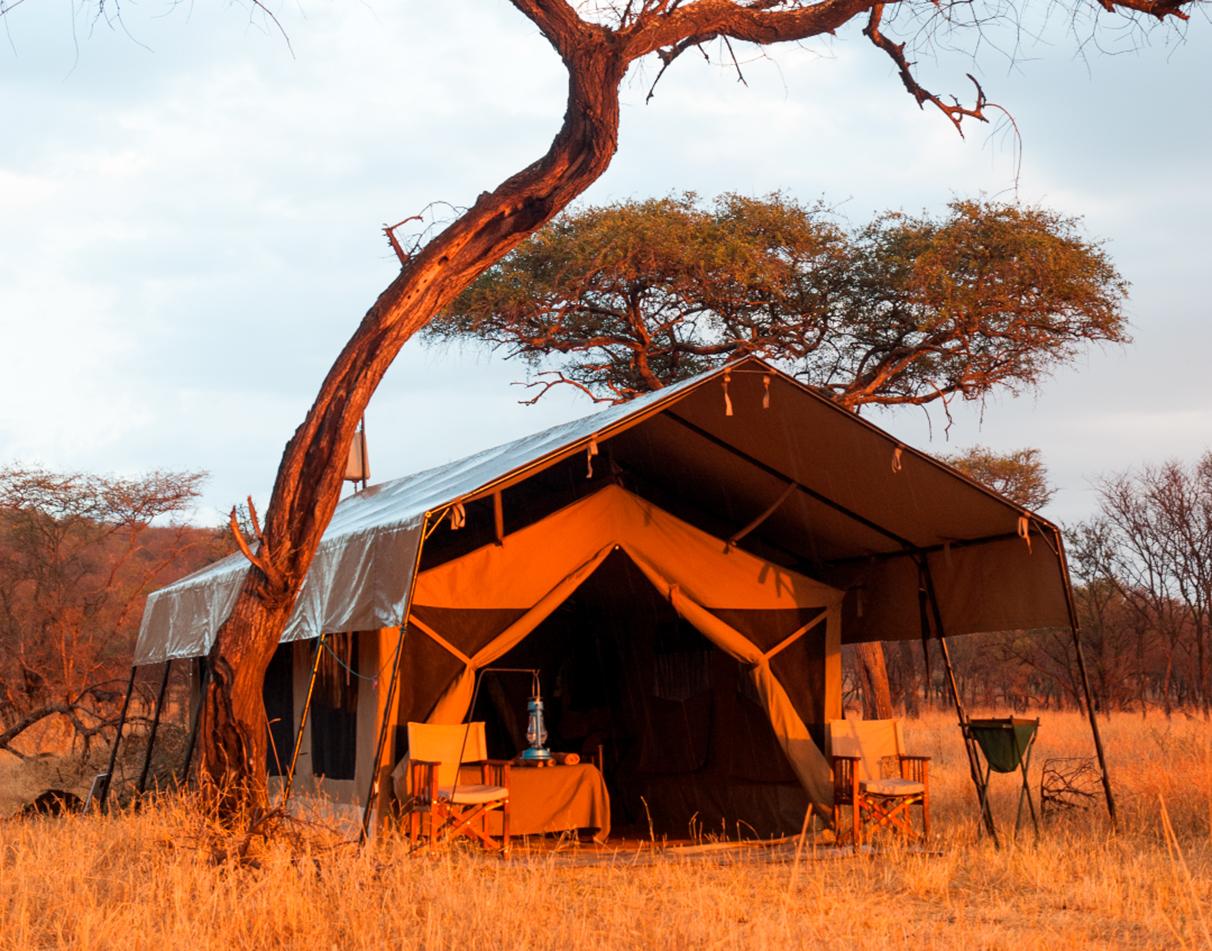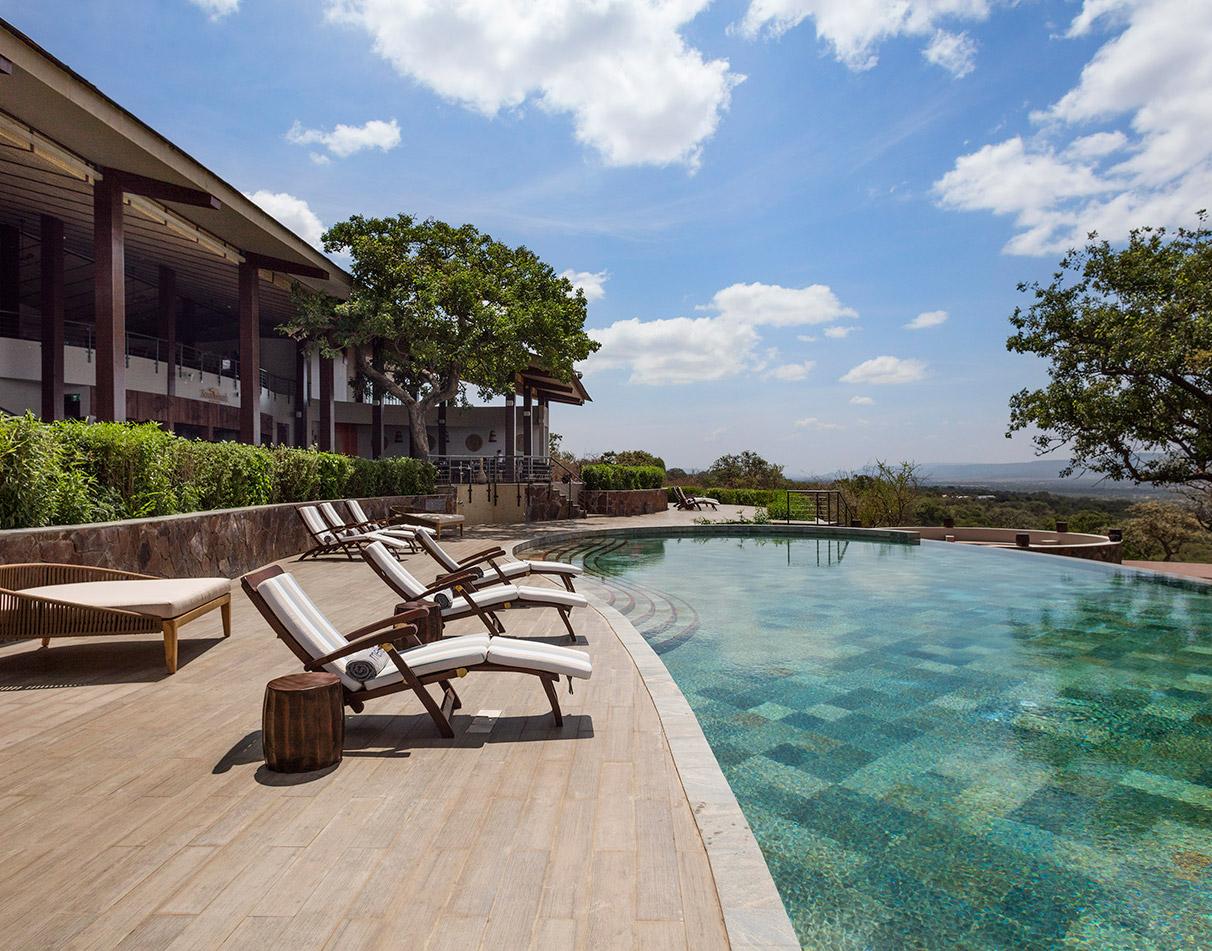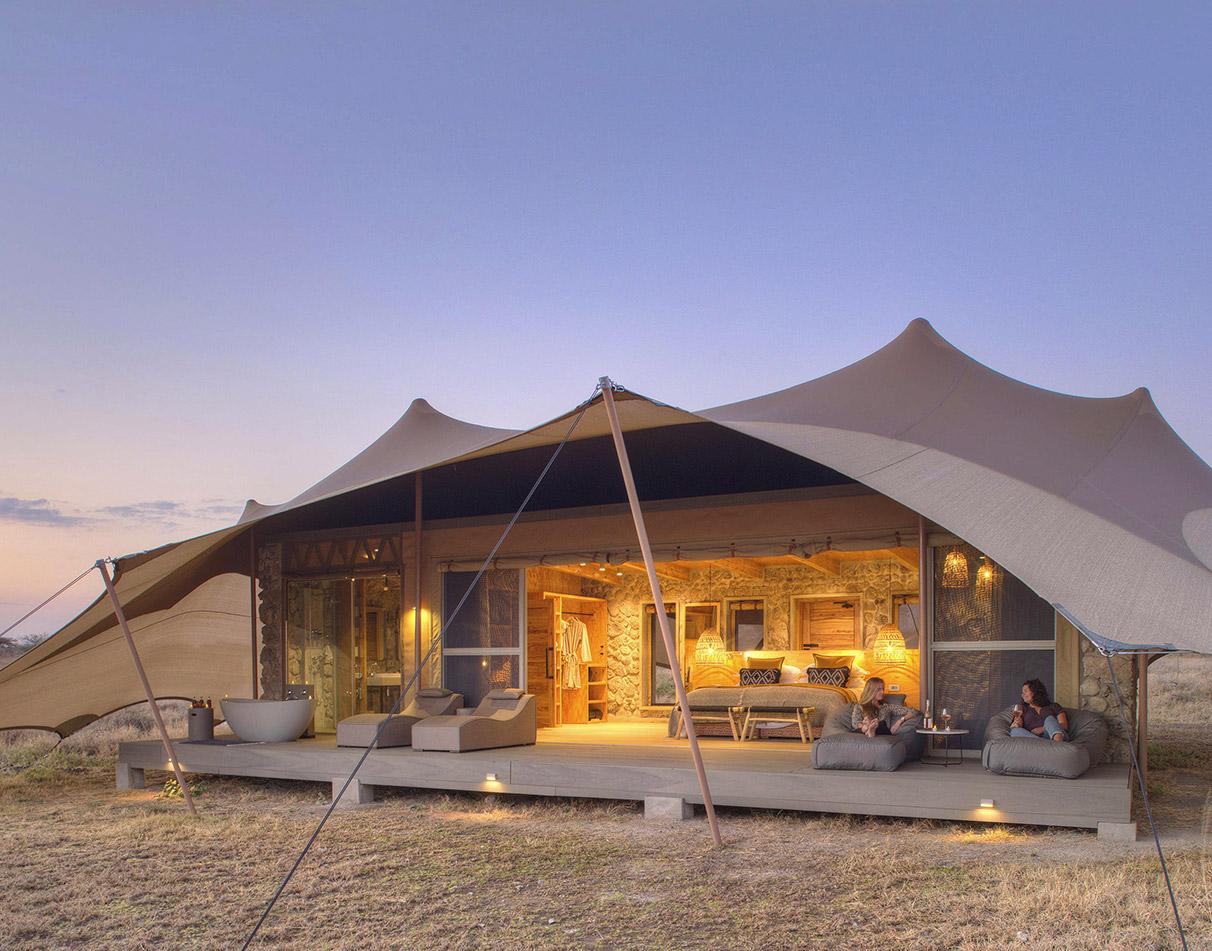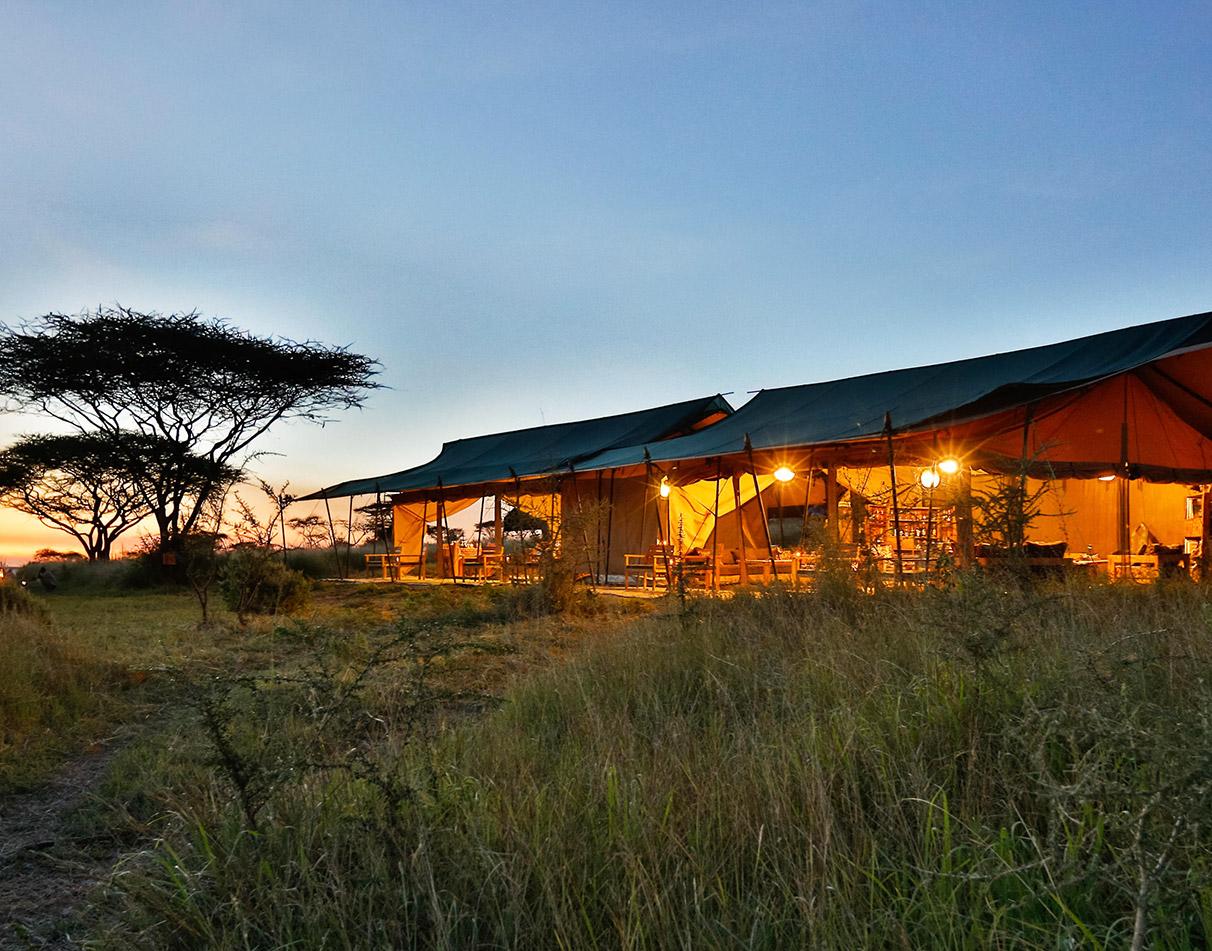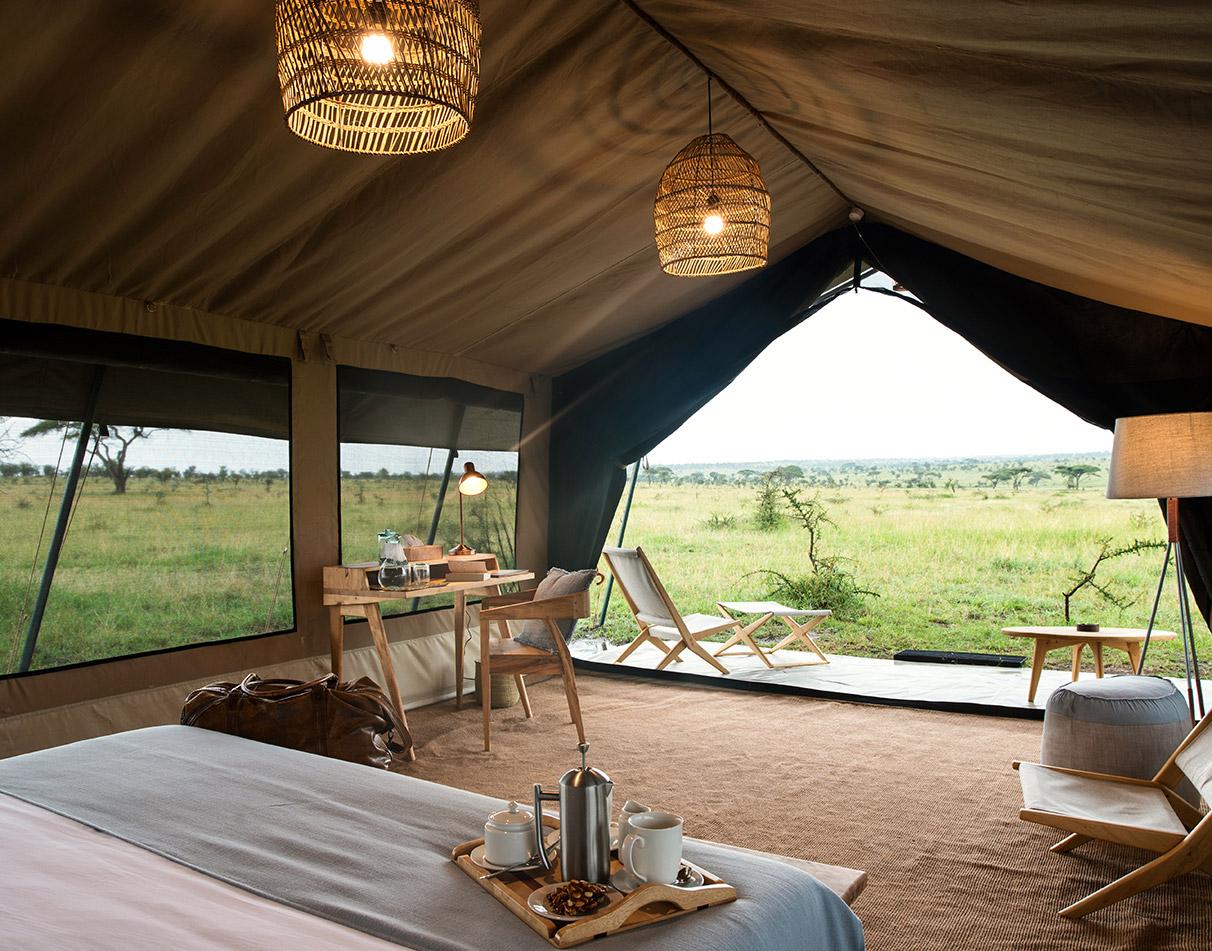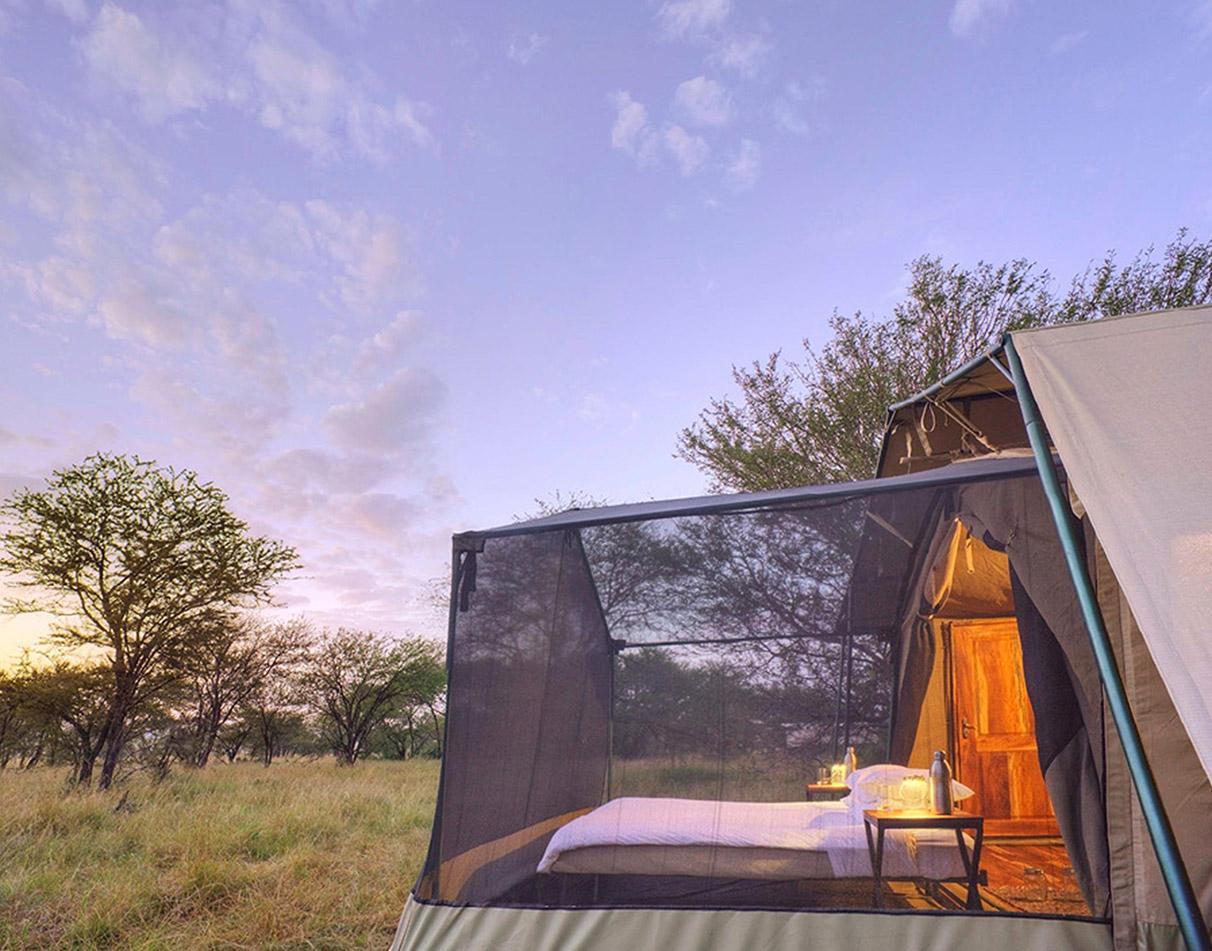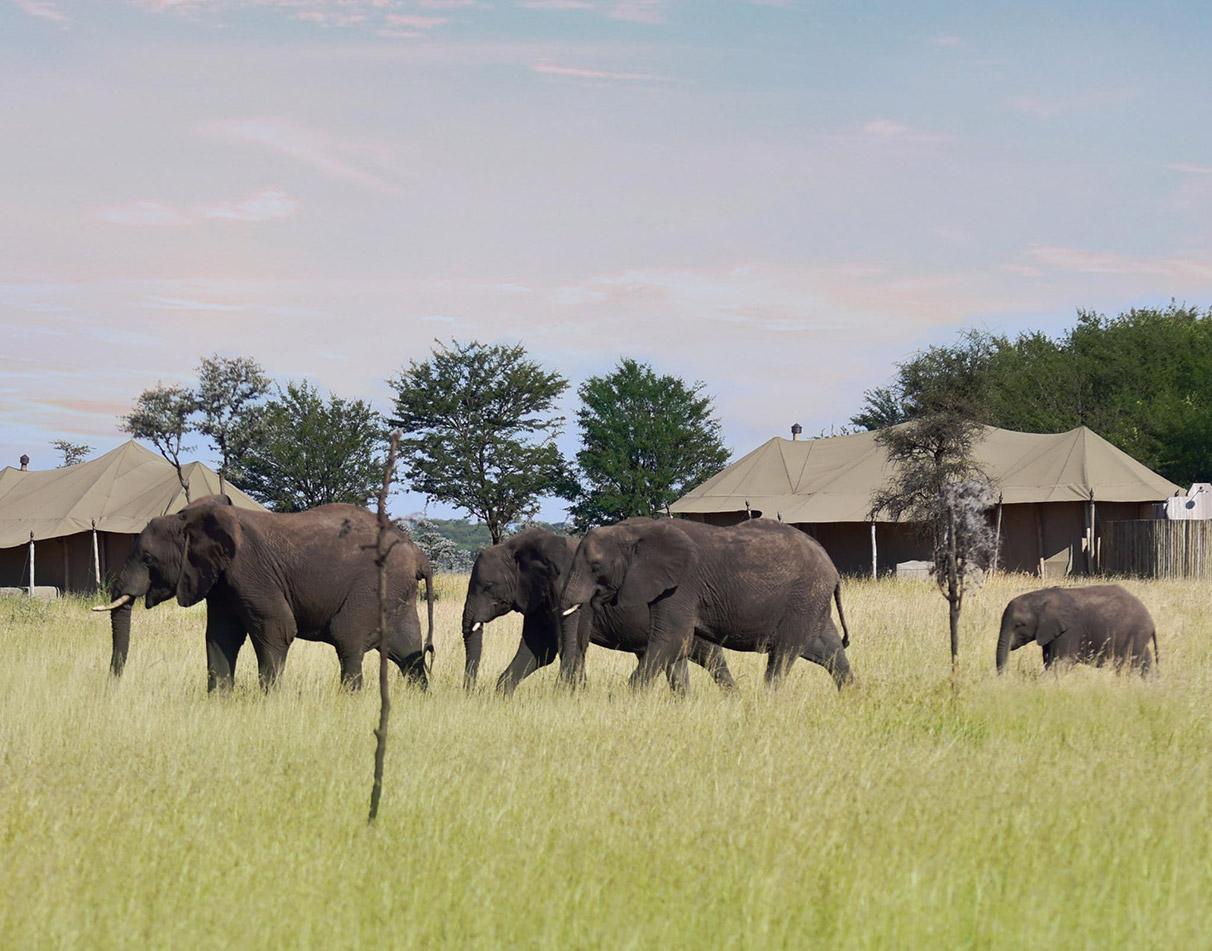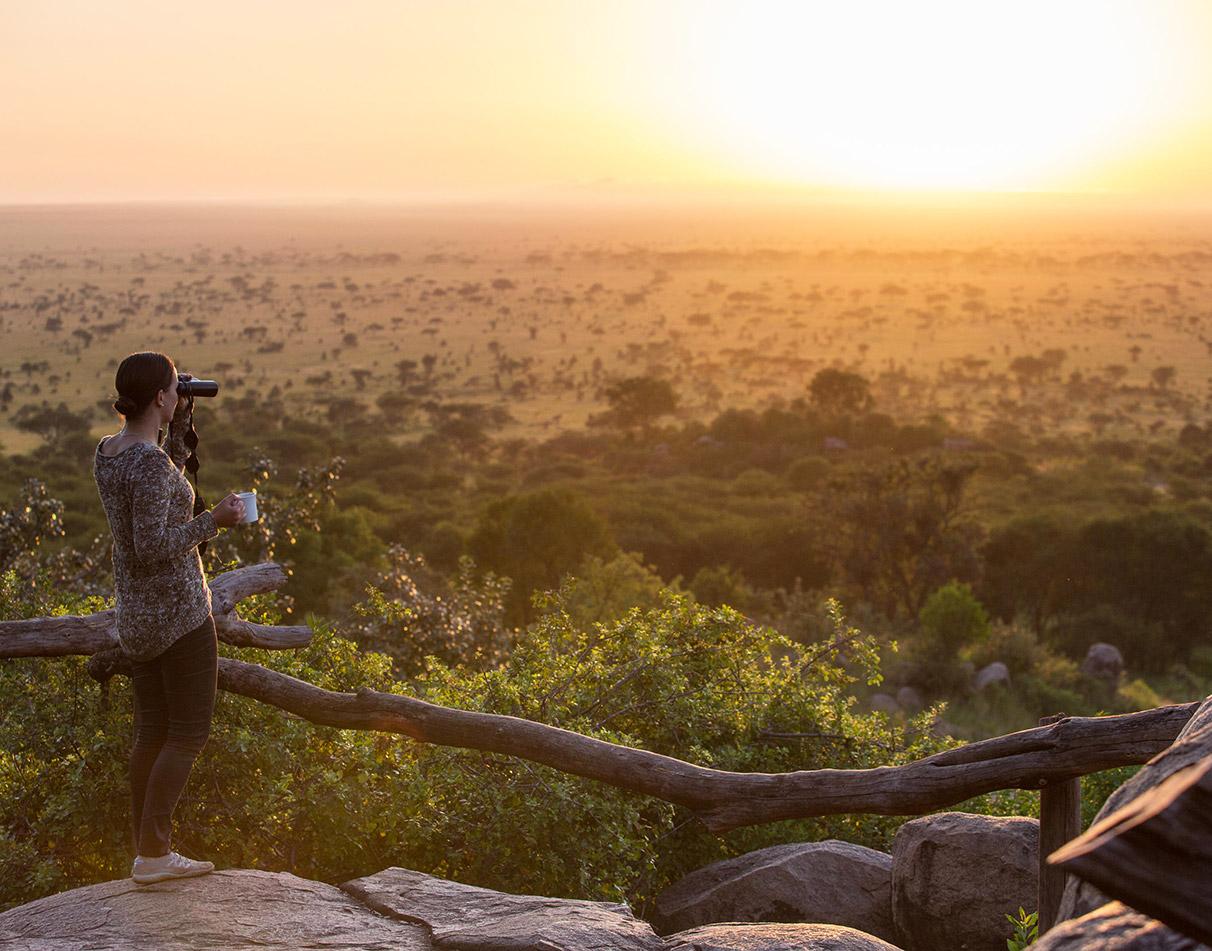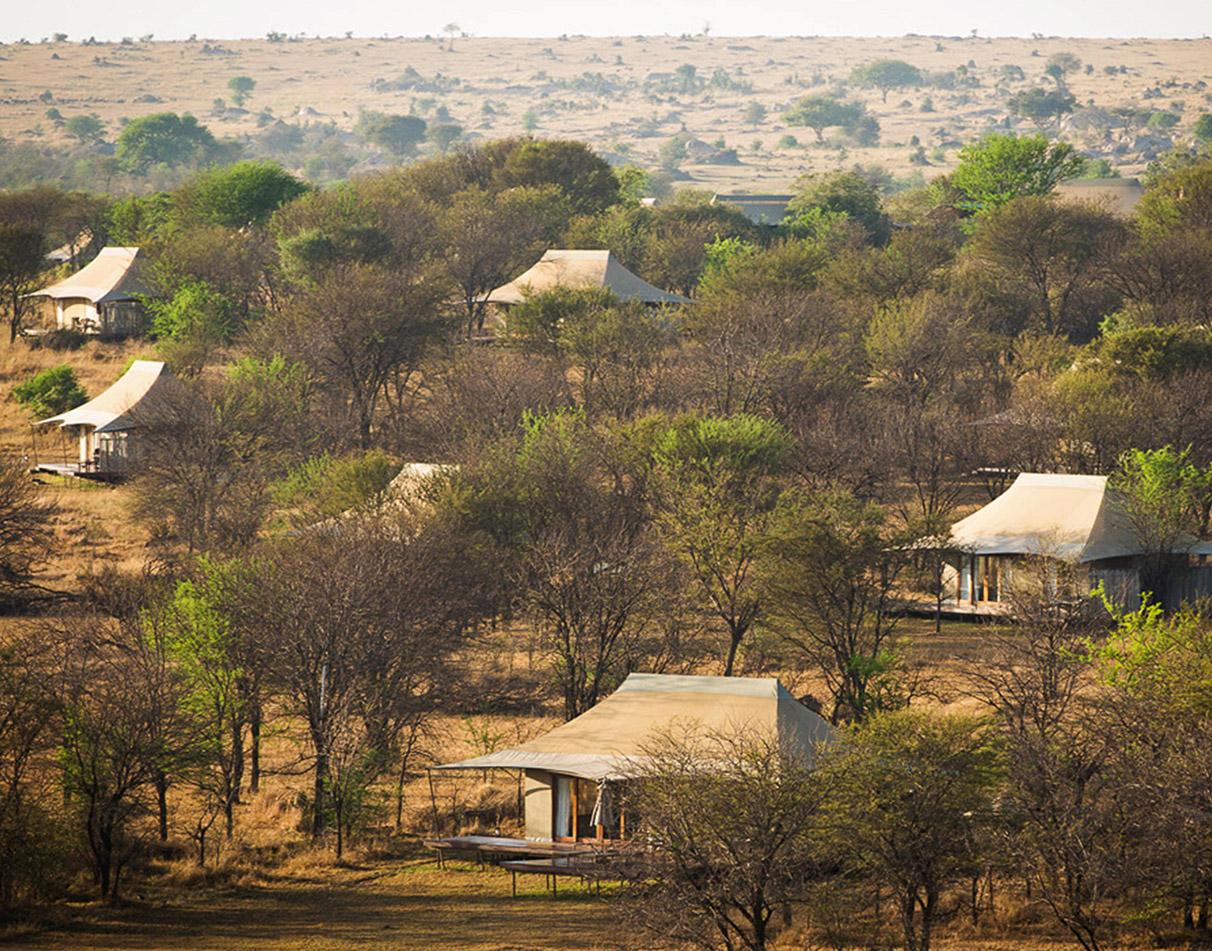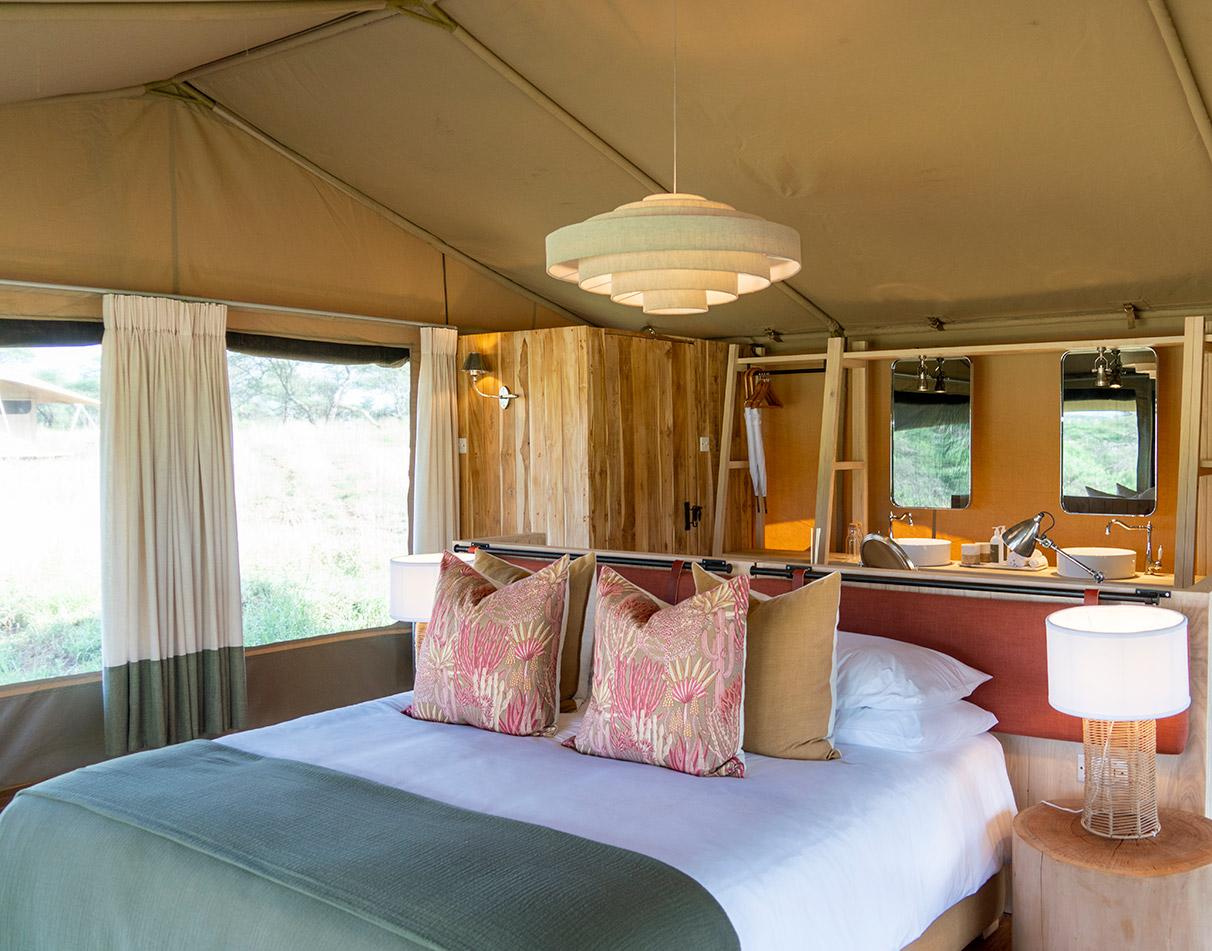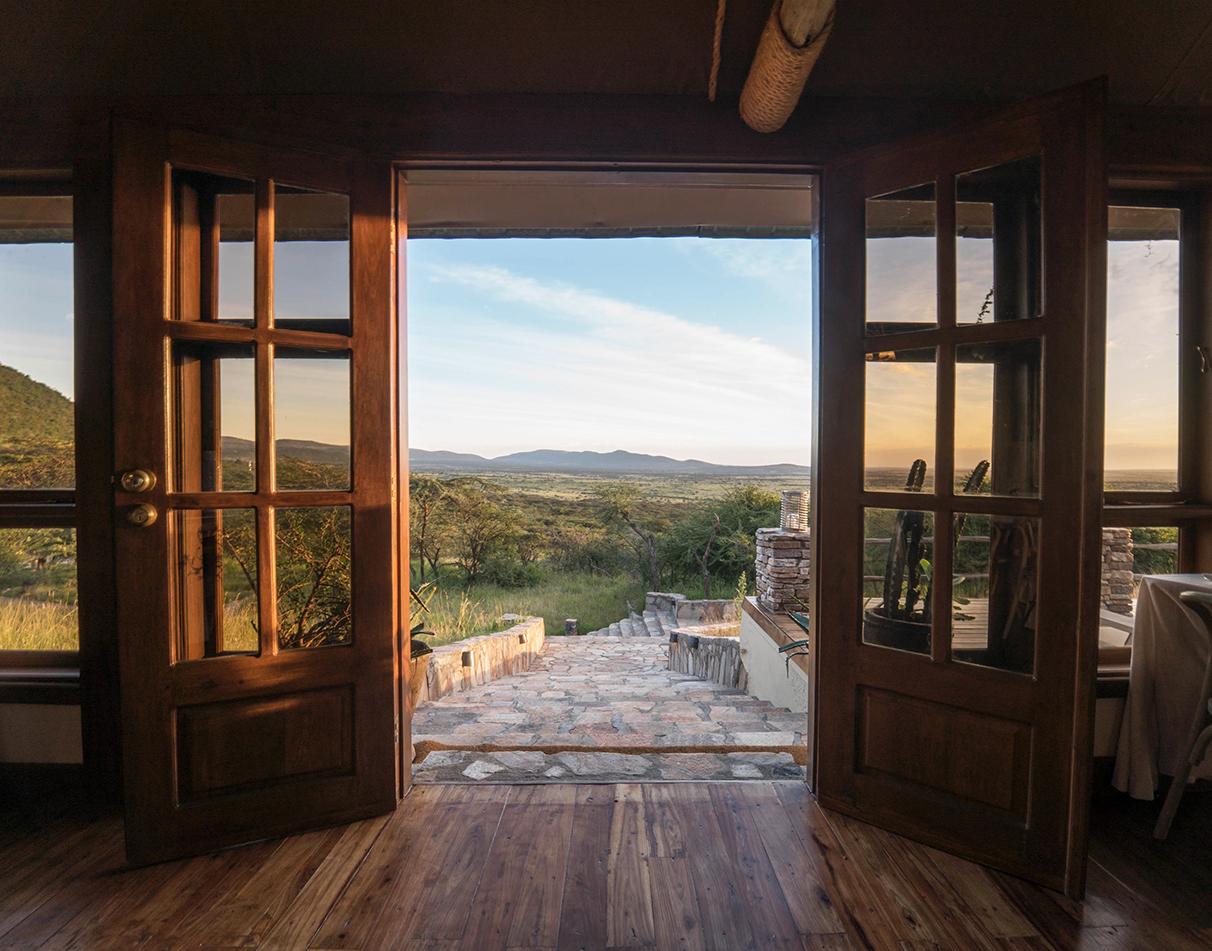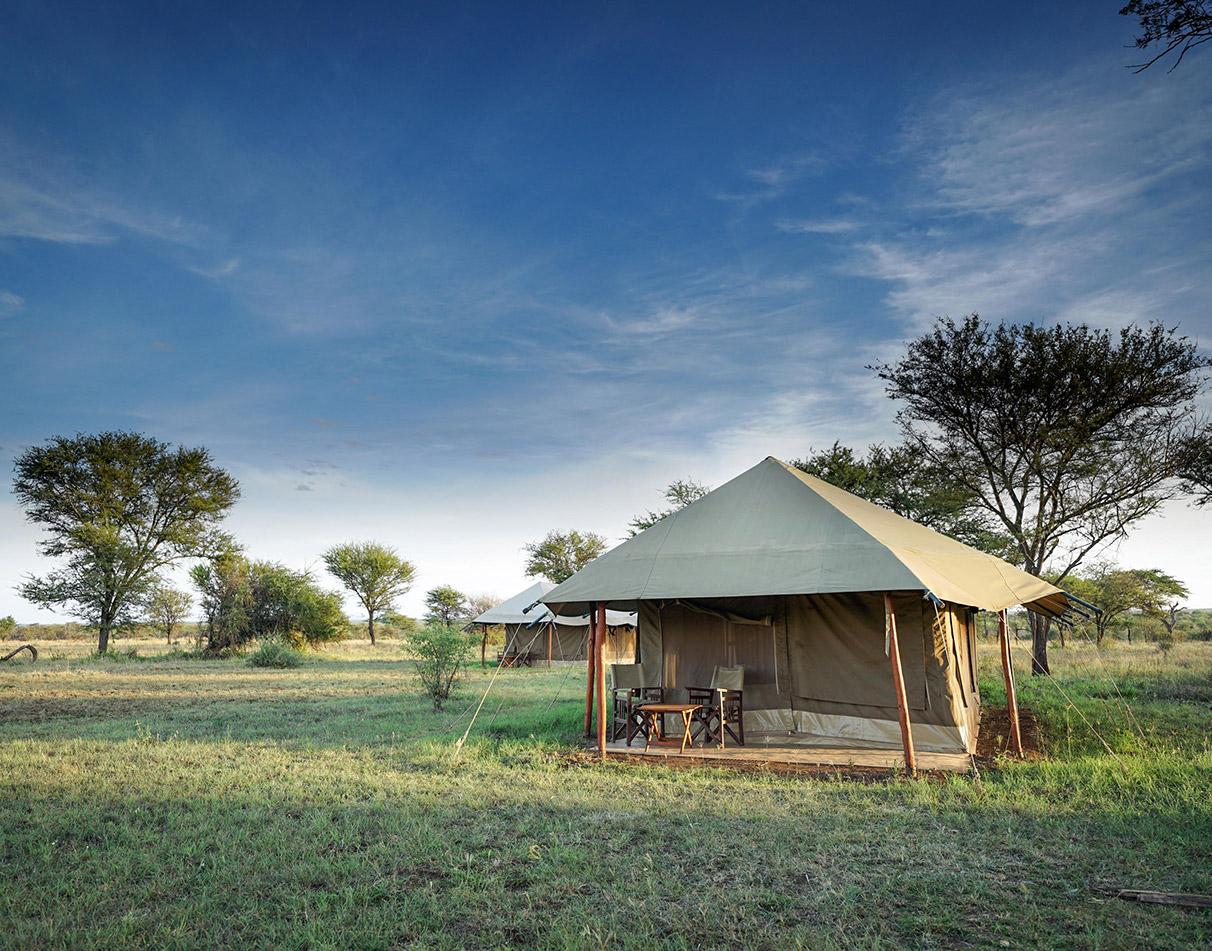Serengeti National Park
14,763 km² (5,700 mi²)
1951 (National Park) | 1981 (UNESCO WHS)
year-round
World-class game viewing all year round
From elephants and lions, hyenas and warthogs, crocodiles, and zebras – the Serengeti National Park will enchant you with its diverse wildlife roaming its seemingly endless plains. It is not only one of the oldest parks in Tanzania, but a UNESCO World Heritage Site as well. As stage for the Greatest Show on Earth – the Great Wildebeest Migration – it has gained worldwide fame. Come to the Serengeti all year-round to observe the resident wildlife, to stay at camps and lodges in beautiful locations and to experience a classic safari adventure.

Serengeti: One of Tanzania’s oldest national parks
When you think of a classic safari, you probably think of the Serengeti National Park. You are right to do so, as it is one of the most spectacular national parks on the planet.
The Serengeti National Park is located in northwest Tanzania. The park and bordering reserves allow for one of the last remaining wildlife migrations on the planet. This wildlife spectacle, the park’s vast numbers of wildlife and its diverse yet beautiful landscapes are a few of the reasons why the park was declared a UNESCO World Heritage Site in 1981.
The Serengeti National Park offers exceptional wildlife viewing all year round, where it is possible to witness the great wildebeest migration and see the Big Five.
The Four Areas of the Serengeti National Park
A glimpse of what to expect.
Central Serengeti
The Seronera Valley is the heart of the park and home to large numbers of wildlife. Spot lions and cheetahs snoozing on the plains in the shade of acacia trees. The Seronera River is lined with Palm, Sausage and Yellow Fever trees. The river attracts numerous birds and animals, including a high population of leopards. At the Retima Hippo Pool, you can see vegetarian giants in their natural habitat.
Southern Serengeti
On the southern plains, you will be amazed by the never-ending grasslands and the huge granite formations called kopjes, home to the whole food chain. Kopjes offer the perfect shady resting places, look-outs and nurseries for lions, leopards, cheetahs, and hyenas to name but a few. Other interesting species to look out for, include the rock hyraxes and colourful Agama lizards. All of the kopjes are named. The most commonly known are Simba, Gol, Research and Moru. From January to February the wildebeest calving occurs around Lake Ndutu. Large numbers of predators can be seen during this time.
Western Serengeti
The Western Serengeti stretches almost as far as Lake Victoria. The vegetation changes to wooded savannah and black cotton soils that are impassible in the rainy season. The Grumeti Game Reserve and the Ikorongo Game Reserve border the park and within it run two large rivers: The Grumeti and the Mbalageti River, which both flow into Lake Victoria. The Grumeti River is famous for its river-crossings, huge crocodiles and the rare Patas Monkeys. From mid-May the wildebeest arrive in this area and the Grumeti river-crossing begins.
Northern Serengeti
Northern Serengeti is made up of open woodlands, riverine forests and ranges of hills. The majestic Mara River is located here and is famous for five-metre-long crocodiles and the iconic wildebeest river-crossing, which is at its most spectacular from mid-July. This area is a lot less frequented by visitors, making it a great place for an intimate safari experience.
Animals and birds of the Serengeti National Park
The park is home to the Big Five – lion, elephant, buffalo, leopard and rhino. However, the Black Rhino can be difficult to spot. The Serengeti has a high population of lions, leopards and cheetahs. Buffalo and a growing number of elephants graze on the savannah.
~530 bird species including Secretary Birds, Egyptian Geese, Black Headed Herons, Grey Crowned Cranes, Kori Bustards and Tanzania’s largest populations of Ostrich can be found in the Serengeti National Park.
The Great Wildebeest Migration
To see ~1.5 million wildebeest in one place is breathtaking. A large number of herbivores attract numerous predators. The drama played out through the plains, and particularly the river-crossings is enthralling.
The wildebeest migration in a snapshot: Visit from June to October to experience the migration in the park. July is the best time to see the river-crossing at the Mara River. But be aware that it will get very busy in the park as well as at the crossing points. For a more intimate safari experience we recommend visiting during the low season or going to more remote areas of the park. The calving season takes place from January to February, whereas the wildebeest rut (mating season) occurs from May to June. Mid-May is the best time to see the river crossing at the Grumeti River. Discover more about our Migration Safaris.
A year-round destination
Thanks to its high number of resident wildlife, the Serengeti offers a spectacular safari experience all year round. Travel during the low season for a more exclusive experience.
The Great Migration
This huge protected area allows ~1.5 million wildebeest to continue their internal drive of travelling over 1000km towards fresh grass and breeding grounds.
Predator & Prey
This huge ecosystem is home to incredibly high populations of animals, which leads to an intense interaction between predator and prey. Witnessing this offers an unforgettable experience.
WHEN TO GO
Best time to go to the Serengeti National Park
You can visit the Serengeti National Park throughout the year. The period from June to October is the dry season, and it’s also when the wildebeest migration occurs. You’ll find it easier to spot wildlife during this time, and the weather is pleasant. However, it’s a popular time, so parts of the park can get busy. The short rains from November to December bring about a burst of green growth, followed by a brief dry spell in January and February. From March to May, long rains occur, and this is the ideal time if you prefer a lush green park with fewer visitors.
Dry Season
June to OctoberIdeal for seeing the wildebeest migration and large numbers of animals. But it can be busy.
Green Season
March to MayThe best time to see a green park with fewer visitors.
Why to go
A classic safari experience all year round
Go to the Serengeti for a classic safari experience: mesmerizing sunsets, abundant wildlife, exciting game drives and different types of lodges and camps. This park is outstandingly beautiful. The vast grassland plains with islands of rocky Kopjes will make you feel tiny amidst nature’s generous vastness. Whilst the riparian zones, the beautiful tree-lined interface between the rivers and the plains, create a hotspot for diversity. Extraordinary numbers of wildlife, including ~530 bird species, offers first-grade wildlife viewing all year round. The Serengeti is most famous for the Great Migration.
If you visit during the low or shoulder season, you may not see a river crossing, but you will not see the large numbers of vehicles and tourists either. For a classic and intimate experience, we recommend travelling off peak season. Since the Serengeti is arguably the most popular park in Tanzania, there is a large number of camps and lodges you can choose from.


I’ve been trying to do this trip for over 10+ years, so it was a realization of a long standing dream. This will rank up there as one of the best family trip we done, and I’m sure the kids will never forget the glory of riding in an open-top safari vehicle through the Serengeti and seeing the veritable plethora of animals roaming around and being almost within arms length from the car.Jonathan | USA
Where to stay in the Serengeti National Park
Location
The seven-hour drive from Arusha to the Serengeti National Park is part of the northern circuit and offers multiple stops on the way, including Lake Manyara National Park and the Ngorongoro Crater. The drive between the parks is simply beautiful and allows you to see the Rift Valley and experience northern Tanzania. As regular flights are available from Arusha, many people choose to drive one way and then fly back. The park’s headquarters is located at Seronera Valley together with the Serengeti Research Centre – renowned for its long history of research. Amazing accommodation is dotted throughout the park.
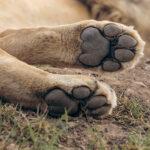

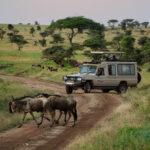
Experience Tanzania with us
Speak to one of our travel experts
Let's start planning your trip!
We will get back to you within 2 working days.
 on Tripadvisor
on Tripadvisor

